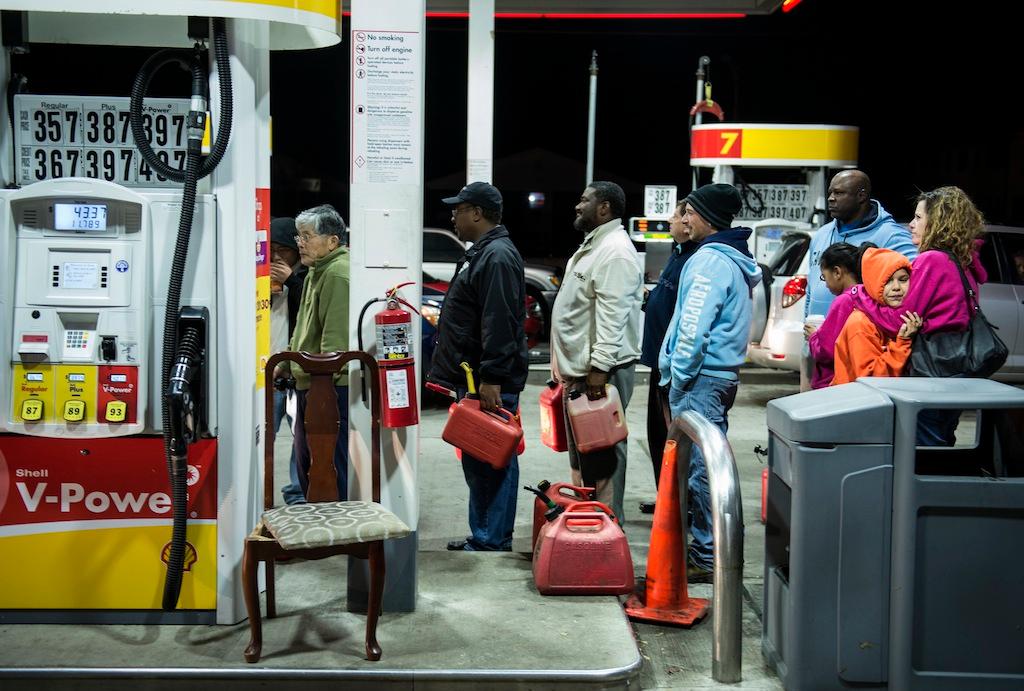Hurricane gas shortage worsens; Gov. Cuomo waves fuel taxes
People wait in line to fill containers with fuel at a Shell gas station October 30, 2012 in Edison, New Jersey. Hurricane Sandy which hit New York and New Jersey left much of Bergen County flooded and without power. AFP PHOTO/Brendan SMIALOWSKI
If Hurricane Sandy's potential links to global warming weren't enough to get you to reconsider our society's dependence on fossil fuels, consider this; widespread gas shortages are stalling rescue services for Sandy's victims, the New York Times reported. Emergency operations, such as fire, police and sanitation workers, all depend on gas to continue their rescue efforts. City officials reached an agreement with a major gas supplier to get enough gas to keep the emergency services running. However, other people are still struggling for fuel.
At a gas station in New Jersey, the Times witnessed a mile long line of cars and mail trucks waiting for a pump. “I’ve been pumping gas for 36 hours, I pumped 17,000 gallons,” Abhishek Soni, the owner of an Exxon in Montclair, told the Times. He even saw fights in line, requiring him to call the police and turn off the pipes for 45 minutes until everyone calmed down. “My nose, my mouth is bleeding from the fumes. The fighting just makes it worse.”
More from GlobalPost: When the BRICs Crumble
New York Governor Andrew Cuomo says he's signed an executive order to waive a requirement that normally puts taxes on fuel tankers, the Associated Press reported. While telling New York residents that there is "no reason to panic" about gas shortages, he is also threatening to strip utility companies of their rights to operate in the state if they don't devote full personnel and equipment to the power restoration.
The US Coast Guard also took steps to ease fuel shortages by opening up the ports of New York and New Jersey, which were closed before Hurricane Sandy, according to Newsday. And in the New York city of Yonkers, Mayor Mike Spana banned people from hoarding gas. Pumps throughout Yonkers were set to automatically shut off after 10 gallons of gas per car was reached.
In the meantime, even when this gas shortage gets better, don't expect gas shortage issues to disappear. We all still have to worry about what happens when peak oil is reached, which could force us to depend on fuel that is more expensive and more difficult to drill, according to a new IMF study.
Wind farms might be known for being ugly, but in comparison to gas station fist fights and fume-caused bloody noses, wind farms are actually starting to look pretty cute.
